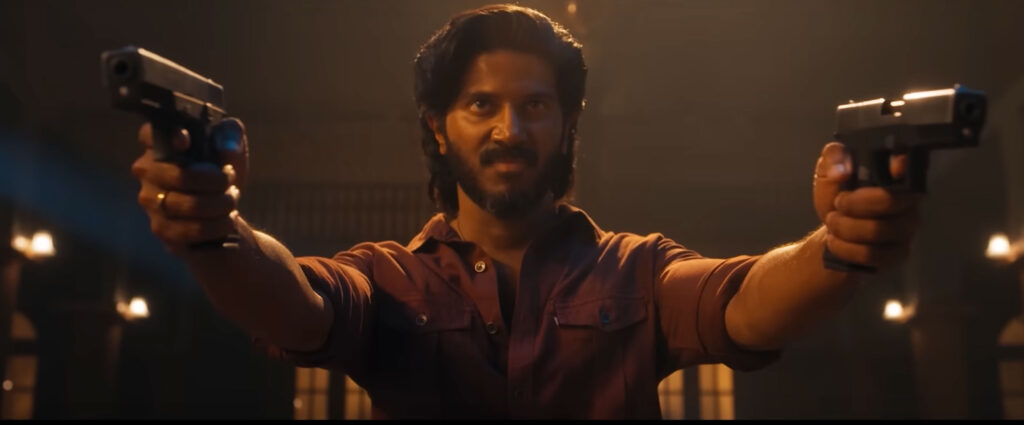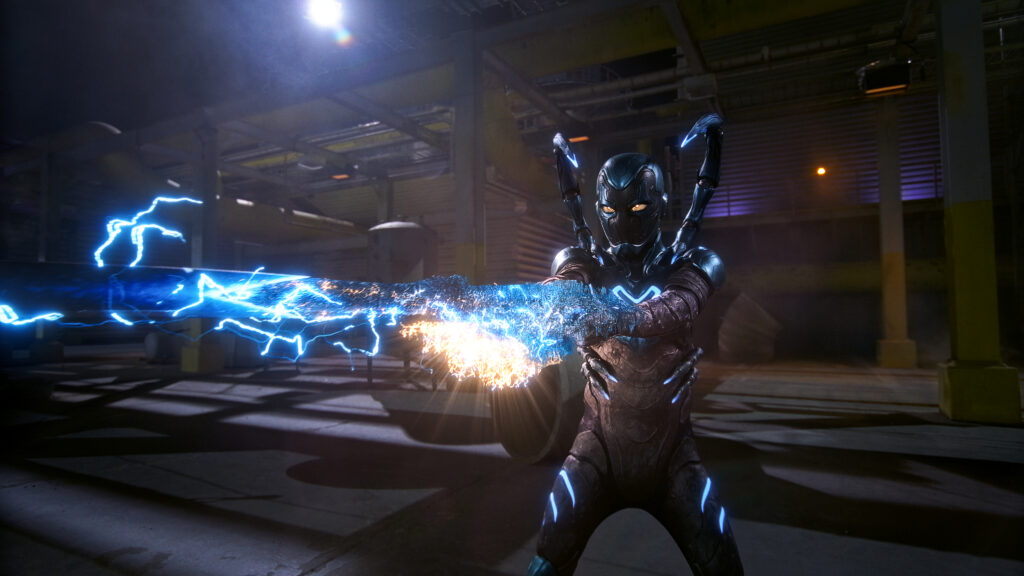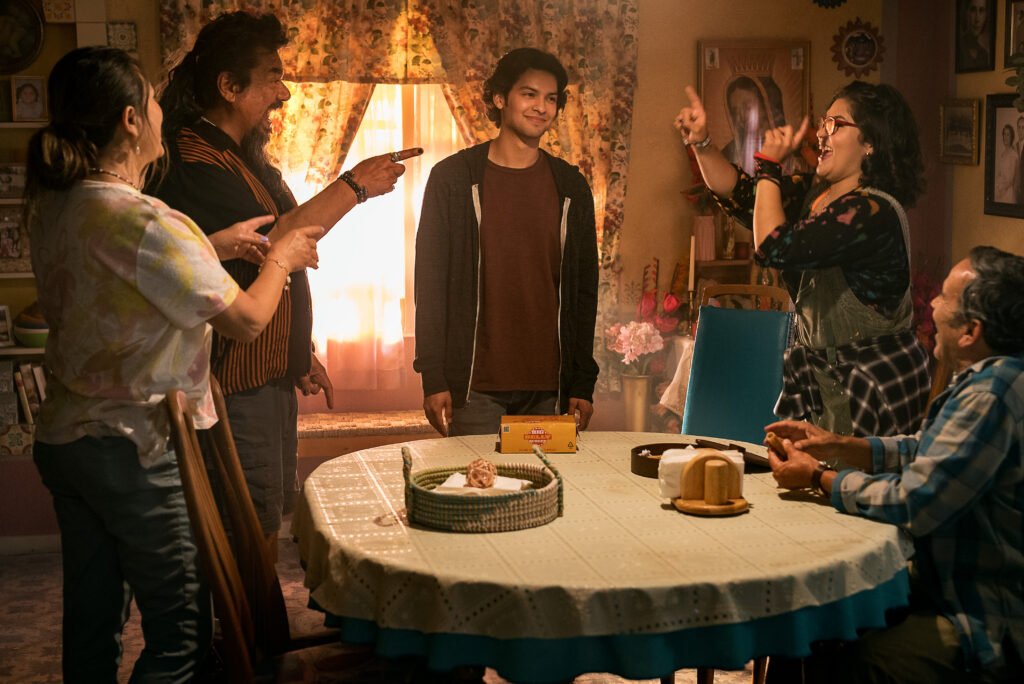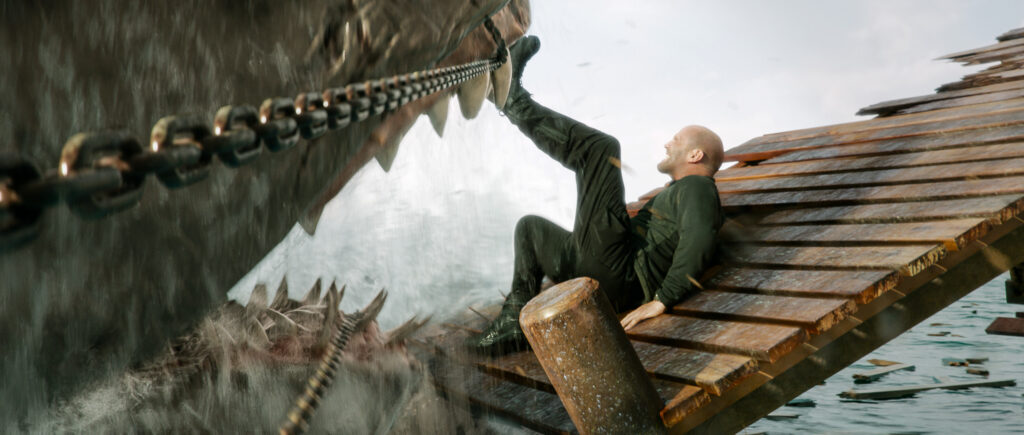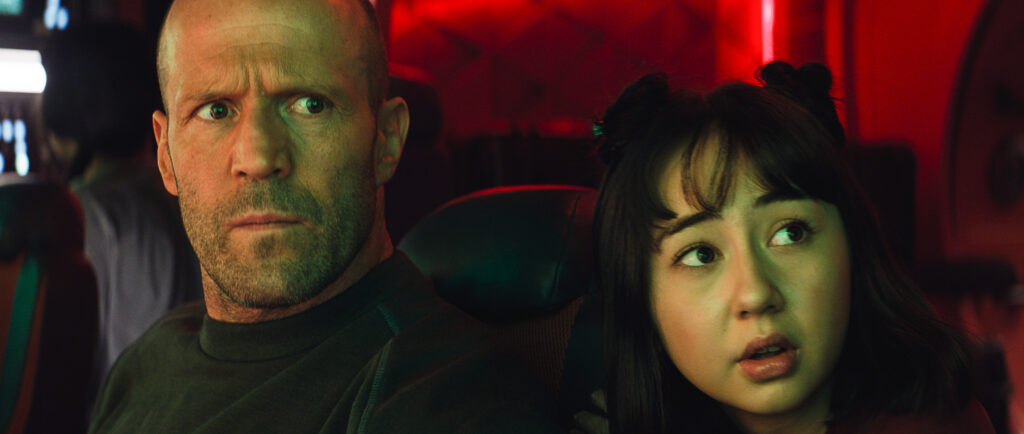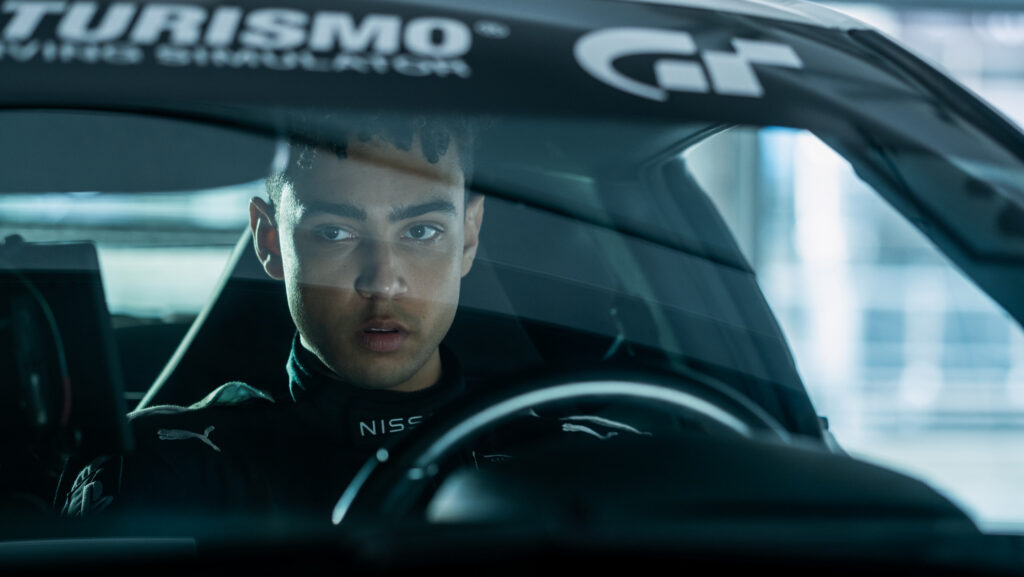August 29, 2023
by Carla Hay
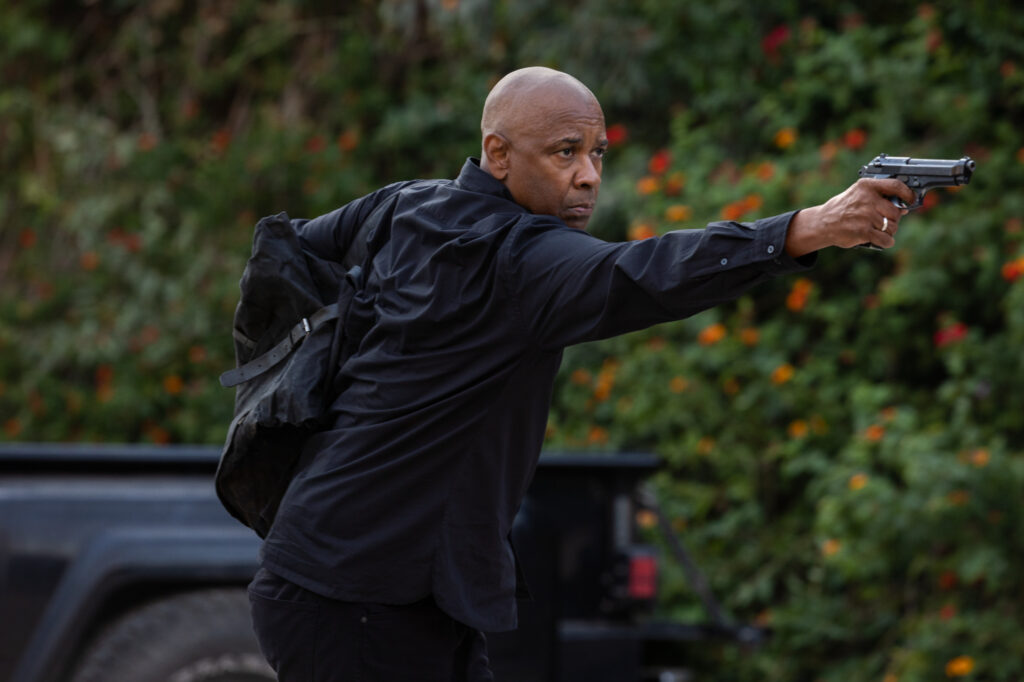
Directed by Antoine Fuqua
Some language in Italian with subtitles
Culture Representation: Taking place in various cities in Italy, the action film “The Equalizer” has a predominantly white cast of characters (with a few black people) representing the working-class, middle-class and criminal underground.
Culture Clash: Vigilante crusader Robert McCall does battle against Mafia gangsters in Italy, as he crosses paths with a U.S. DIA (Defense Intelligence Agency) official, who is on the trail of drug-smuggling terrorists.
Culture Audience: “The Equalizer 3” will appeal primarily to people who are fans of star Denzel Washington and “The Equalizer” movie franchise, but “The Equalizer 3” is blandly predictable and doesn’t offer anything innovative to the franchise.
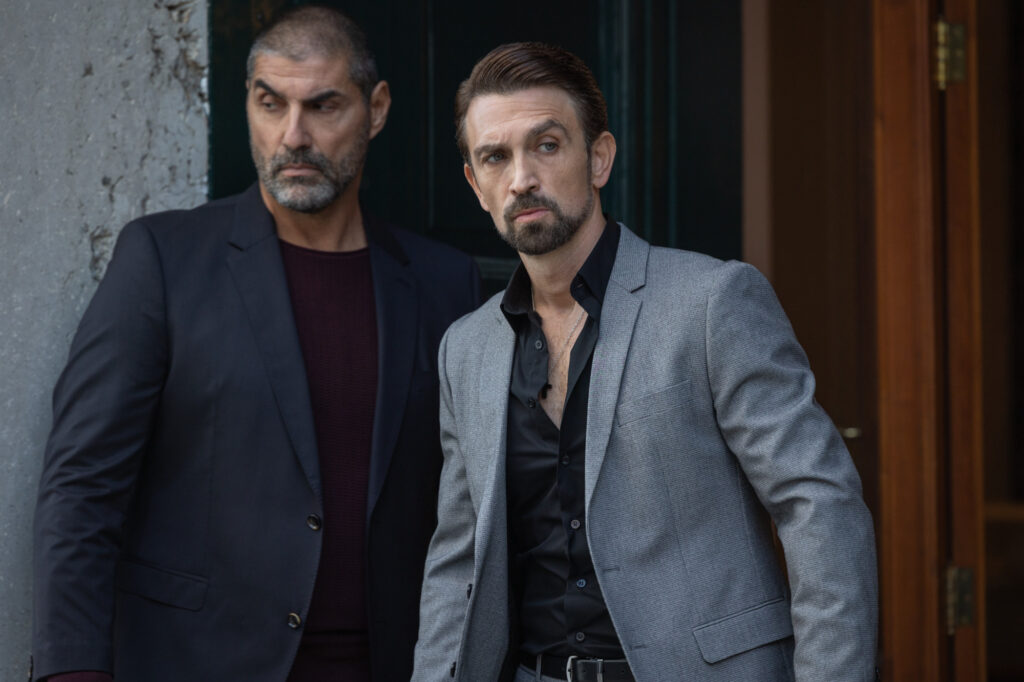
Even with the acting talent of star Denzel Washington, “The Equalizer 3” is a soulless, formulaic and often idiotic action flick about the protagonist fighting Mafia gangsters in Italy. It’s easily the worst movie of this franchise. New characters are introduced but are barely developed. The movie’s “plot reveal” is not surprising at all.
Directed by Antoine Fuqua and written by Richard Wenk, “The Equalizer 3” is the follow-up to 2014’s “The Equalizer” and 2018’s “The Equalizer 2,” which were also directed by Fuqua and written by Wenk. All of these movies are inspired by “The Equalizer” TV series, which starred Edward Woodward and was on the air from 1985 to 1989. The lazy screenplay of “The Equalizer 3” is the weakest link in the movie.
“The Equalizer 3” is the type of mindless story that’s in a low-quality action flick, but “The Equalizer” has the high budget of a major studio movie. In other words, “The Equalizer 3” looks slick, and it has the star appeal of Washington, but it’s ultimately a very hollow movie with a basic plot that’s been seen and done many times before in other action movies where the “hero” fights gangsters. Just because “The Equalizer 3” changed the story’s location to Italy (the first two “Equalizer” movies took place in Boston) doesn’t mean that “The Equalizer” has anything new and interesting to say.
The opening scene of “The Equalizer” takes place in Sicily, Italy, and shows a crime lord named Lorenzo Vitale (played by Bruno Bilotta) driving himself and his unnamed grandson (played by Adriano Sabrie) in a Land Rover to a house in a fairly secluded area. While his grandson (who’s about 11 or 12 years old) waits in the car, Lorenzo is greeted by an armed security guard, who shows Lorenzo the massacre that took place inside the house. The bloodied bodies of about eight or nine men are shown in various places throughout the house.
In one of the house’s rooms, the man who caused this massacre is being held at gunpoint by two thugs. This vigilante is a loner named Robert McCall (played by Washington), a former U.S. Marine and a former U.S. Defense Intelligency Agency (DIA) official, who is based in Boston and currently makes a living in working-class jobs. (Robert worked at a hardware store in “The Equalizer” and as a Lyft driver in “The Equalizer 2.”) Robert’s skills as a former government assassin come in handy when he goes on his vigilante missions.
What is Robert doing in Italy? And what does he have against Lorenzo? Robert snarls to Lorenzo: “You took something that didn’t belong to you. I’m here to take it back.” Through some highly implausible fight tactics, Robert then proceeds to kill everyone in the house. Most of the murder scenes in “The Equalizer 3” are very graphic and seem to revel in the violence. For example, when Robert murders everyone in the house, he shoots a man through the eye so that the bullets can shoot another man.
Robert thinks he can make an easy getaway, but he doesn’t know until it’s too late that Lorenzo’s grandson is outside. Lorenzo’s grandson has a shotgun that he uses to shoot Robert, who fires his gun in the air. This gunfire scares the boy, who runs away. Robert soon finds out he’s been shot in the back. Robert is able to get in his car before he starts to lose consciousness.
Robert is found unconscious in his car and rescued by a local man, who brings Robert to a doctor named Enzo Arisio (played by Remo Girone), who performs surgery on Robert in Enzo’s home. Why didn’t Enzo take Robert to a doctor or contact police? Enzo lives in an area that is ruled by the Mafia, so he knows that when a stranger with a gunshot wound is in the area, there’s a good chance it has something to do with the Mafia.
Enzo asks Robert what his name is, and Robert says his name is Roberto. Enzo then asks Robert if he is a good man or a bad man. Robert says that he doesn’t know. Enzo doesn’t ask any more questions and decides to let Robert stay in Enzo’s house while Robert recovers from his injuries and surgery. Enzo tells Robert that Robert is lucky that he was shot with a .22 caliber bullet instead of a more high-impact bullet.
After the fight/killing scene in the beginning of “The Equalizer 3,” not much happens in the movie for the next 20 minutes. Robert is seen walking around with a cane, as he gets to know Enzo and some of the other local people. Eventually, Robert no longer has to use a cane. For someone who was shot in his back, Robert makes a remarkably quick recovery. The movie doesn’t bother to show Robert go through any realistic physical therapy.
Robert becomes friendly with a generous and amiable restaurateur named Angelo (played by Daniele Perrone), whose employees include a cook in his late teens or early 20s named Khalid (played by Zakaria Hamz) and a server in her 30s named Aminah (played by Gaia Scodellaro), who shows a semi-romantic interest in bachelor Robert. Aminah literally doesn’t do much in this movie but smile a lot, work in the restaurant, and show Robert some of her favorite food places in the area. Aminah’s presence in the movie has no effect on the overall plot.
There aren’t many female characters with speaking roles in “The Equalizer 3.” The female characters who speak are only in this movie to react to whatever the men do. There are many superficial male characters in “The Equalizer 3,” but at least they are given more to do and have more action-oriented roles. The women in “The Equalizer 3” who have the most dialogue in the movie all look like overly polished and attractive actresses instead of looking more realistic for their roles.
Angelo owes money to local gangsters who are led by the ruthless Vincent Quaranta (played by Andrea Scarduzio), a not-very-interesting stereotype of a Mafia leader. Vincent has his equally sadistic younger brother Marco Quaranta (played by Andrea Dodero) do a lot of the dirty work for the gang. All the gangsters except Vincent and Marco are generic with forgettable dialogue. There’s also a Mafia cartel called the Camorra crime family that figures into the plot.
During his stay in Italy, Robert makes a phone call to DIA official Emma Collins (played by Dakota Fanning) at her headquarters in the United States. Emma is later revealed to have a connection to people whom Robert knew in his past. (This connection is fairly easy to predict.)
Robert passes along an “anonymous” tip to Emma about drug smuggling of synthetic amphetamines in Italy. Emma is immediately able to trace the call and find out who made the call. And it isn’t long before Emma arrives in Italy and makes contact with Robert. Emma’s supervisor Frank Conroy (played by David Denman) occasionally shows up to give orders.
“The Equalizer” takes place in various locations in Italy, including Sicily, Rome and Naples. There’s some moronic mush in the plot about the connection between the drug smuggling and terrorism. But that potentially intriguing story is just a backdrop to the movie’s ultra-violent but ultimately quite tedious scenes involving fighting, torturing and killing. No one is expecting “The Equalizer 3” to be award-worthy, but this shallow movie really insults the intelligence of viewers on the most basic levels, with its dull ripoff ideas, far-fetched scenarios and stupid dialogue.
A local police marshal named Gio Bonucci (played by Eugenio Mastrandrea), his wife Chiara Bonucci (played by Sonia Ben Ammar) and their daughter Gabriella “Gabby” Bonucci (played by Dea Lanzaro) are among the targets for the gangster violence. The local police, led by Police Chief Barella (played by Adolfo Margiotta), might or might not be trustworthy, depending on their level of ethics or corruption. All of these supporting characters are either very underdeveloped or are cartoonish caricatures.
“The Equalizer 3” is the type of idiotic movie where the villain in charge could easily kill the “hero” in the middle of a violent fight scene, but instead the villain just glares and makes threats with a weapon in his hand. There are some overly choreographed fight scenes that might impress some viewers, but it all just looks so phony. Washington’s charisma is mostly muted in “The Equalizer 3,” which makes Robert into nothing more than the type of two-dimensional character that might be in a video game. “The Equalizer 3” has some lovely aerial shots of Italy’s landscape, but the ugly truth is that “The Equalizer” is too much of a disappointing slog of missed opportunities to be a genuinely unique and exciting action film.
Columbia Pictures will release “The Equalizer 3” in U.S. cinemas on September 1, 2023.

